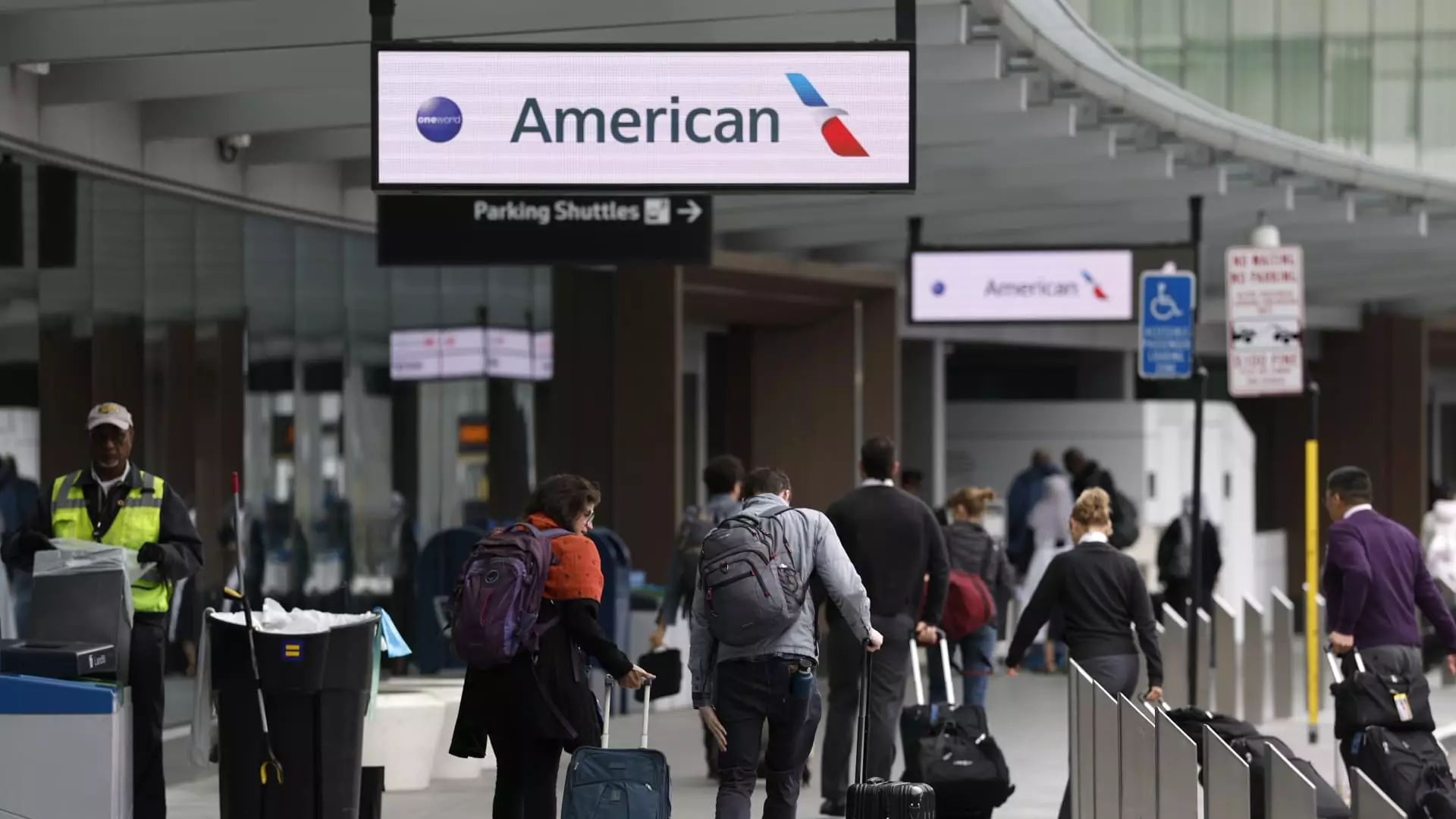In an increasingly volatile economic landscape, the sentiment among potential travelers appears muted at best. Airline CEOs have recently highlighted an alarming trend: the eagerness for domestic trips is fading. American Airlines’ CEO Robert Isom echoed a sentiment that many in the industry are undoubtedly feeling—the discomfort surrounding economic uncertainty is leading travelers to second-guess their vacation plans. This is significant because travel isn’t just a luxury; it is often a major outlet for the middle class, a sector already reeling from inflationary pressures and fluctuating job markets. A decrease in consumer confidence can drastically affect discretionary spending, with vacations being one of the first expenses cut when uncertainty looms.
The Effect of Economic Policies on the Airline Sector
A significant factor affecting passenger volume is the unpredictable economic climate molded by ongoing governmental policies. The erratic nature of Trump-era tariff policies has created an environment where businesses and individuals alike are hesitant to commit to long-term plans, including travel. The ramifications extend beyond simple increase in airfares or packing efficiency; they signify a profound uncertainty that discourages consumers from booking flights. Wall Street’s expectations, once buoyant, are now tempered by concerns over rising operational costs and flatlining corporate travel. As companies reassess their budgets in light of these realities, the airline industry finds itself at an inflection point—faced with a choice to either adapt or continue facing declining revenues and overcapacity issues.
Corporate Travel: The Lifeline That’s Losing Air
Historically, corporate travel has been a knight in shining armor for airlines, allowing them to charge higher fares due to the reduced price sensitivity of business travelers. Unfortunately, this lifeline is appearing frayed. Recent reports indicate that the anticipated growth in corporate travel has stagnated, with even Delta Airlines’ impressive year-on-year growth now flatlining. The ongoing uncertainty around economic conditions inevitably leads to budget cuts within corporations, causing them to rein in travel expenses and seek alternatives to in-person meetings. This shift not only diminishes revenues for airlines but reflects a broader trend toward virtual engagements that further reduces the overall demand for flights.
Price Wars in Response to Overcapacity
With airlines grappling with excess seat inventory, they have little choice but to engage in price wars to fill planes. In reports from March, airfare dipped by around 5.3% compared to the previous year, signaling desperation to fill every available seat. This is not a sustainable strategy; while lower prices may attract some passengers, they can also undermine the airline industry’s profitability in the long run. The alarming fact that weak demand is affecting second-quarter earnings for major carriers should raise red flags across the industry. Alaska Airlines, for example, recognized that while demand hasn’t completely vanished, it certainly hasn’t reached the heights projected by industry leaders, prompting a desperate move to lower their fares.
The Glimmer of Hope in International Travel
Amid the uncertainties of domestic travel, it’s fascinating to note that international flights are still witnessing considerable demand. While U.S. citizens remain skeptical about domestic trips, they are flocking overseas, indicating a disconnect between local economic conditions and international travel desire. The strong preferences for overseas travel showcase a willingness among consumers to spend hard-earned dollars when they perceive value—whether it’s cheaper costs in international markets or the allure of unique experiences. This behavior might inspire airline executives to pivot their strategies, focusing on international flights while re-evaluating their domestic positioning.
Growing Pains Destined to Shape the Future
The current state of the airline industry serves as a strong reminder of the cyclical nature of economic conditions. Isom’s remarks about the necessity of restoring certainty in the economy may resonate deeply within the industry. However, it is questionable whether simply waiting for conditions to improve is a viable strategy for success. As airline leaders consider their next moves, they must prioritize agility and responsiveness instead of relying solely on pre-established expectations. In navigating future uncertainties, they will undoubtedly have to adopt innovative business models that not only cater to evolving consumer preferences but also bolster their financial resilience.
Ultimately, the next set of challenges for the airline industry could dramatically reshape air travel as we know it. The battle isn’t just about getting passengers on planes; it’s about redefining the relationship between consumers and the airlines in a world fraught with unpredictability.


Leave a Reply